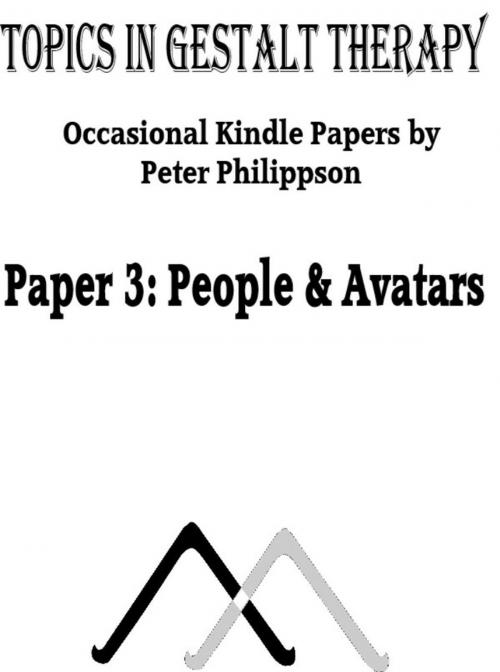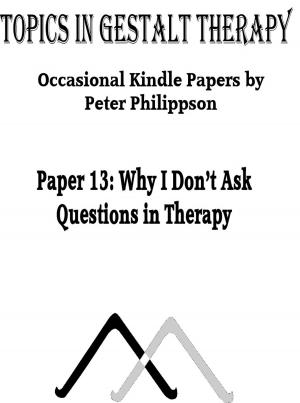People and Avatars
Nonfiction, Health & Well Being, Psychology, Psychotherapy, Social Psychology, Social & Cultural Studies, Social Science, Anthropology| Author: | Peter Philippson | ISBN: | 1230002400112 |
| Publisher: | Manchester Gestalt Centre | Publication: | February 6, 2017 |
| Imprint: | Language: | English |
| Author: | Peter Philippson |
| ISBN: | 1230002400112 |
| Publisher: | Manchester Gestalt Centre |
| Publication: | February 6, 2017 |
| Imprint: | |
| Language: | English |
We are in a world that is increasingly complex. Most of us inhabit two worlds that seem very different, the immediate experiential world and a virtual cyber-world of e-mail, text, social media. Gestalt Therapy emphasises ‘contact’ and ‘awareness’, and the question arises how much we can talk about these in relation to connections in cyberspace. What are the ethics of cyberspace?
One of the aspects of cyberspace is that we can create ‘avatars’ of ourselves that are our extensions into that space. Of course the avatars can be very different from how we present ourselves in the physical world, looking different, showing a different age, race, emotional disposition, marital status, or gender. This can be either an expression of some aspect of myself that I do not feel able to show in ‘real life’, or it can be a manipulation, particularly where people are trying to lure young people into inappropriate relationships by pretending to be teenagers themselves. But people are also showing some aspect of themselves, maybe cruel or manipulative, that they don’t risk showing in other places. So the significant point here is that the ‘avatar’ can be both more ‘real’ or less ‘real’ than the everyday image. My proposal is that the acceptance of the cyber-world was facilitated by a pre-existing culture of narcissism, where the development of an idealised self-image outweighed any sense of an authentic self meaningfully contacting other people and the world. In other words, people are walking about as avatars in the ‘real world’, not just in cyberspace!
We are in a world that is increasingly complex. Most of us inhabit two worlds that seem very different, the immediate experiential world and a virtual cyber-world of e-mail, text, social media. Gestalt Therapy emphasises ‘contact’ and ‘awareness’, and the question arises how much we can talk about these in relation to connections in cyberspace. What are the ethics of cyberspace?
One of the aspects of cyberspace is that we can create ‘avatars’ of ourselves that are our extensions into that space. Of course the avatars can be very different from how we present ourselves in the physical world, looking different, showing a different age, race, emotional disposition, marital status, or gender. This can be either an expression of some aspect of myself that I do not feel able to show in ‘real life’, or it can be a manipulation, particularly where people are trying to lure young people into inappropriate relationships by pretending to be teenagers themselves. But people are also showing some aspect of themselves, maybe cruel or manipulative, that they don’t risk showing in other places. So the significant point here is that the ‘avatar’ can be both more ‘real’ or less ‘real’ than the everyday image. My proposal is that the acceptance of the cyber-world was facilitated by a pre-existing culture of narcissism, where the development of an idealised self-image outweighed any sense of an authentic self meaningfully contacting other people and the world. In other words, people are walking about as avatars in the ‘real world’, not just in cyberspace!















